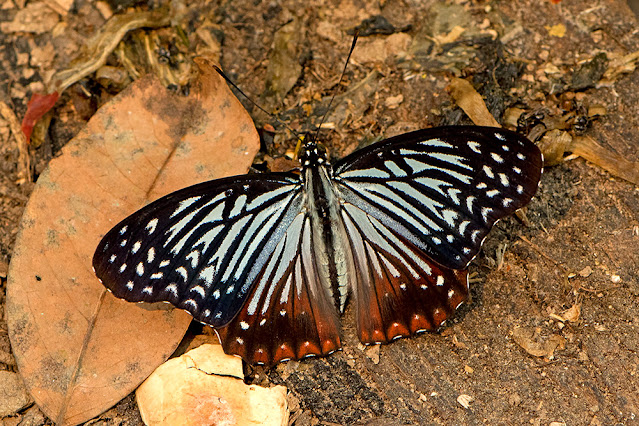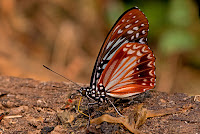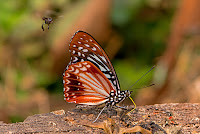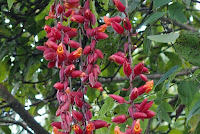<> Hestinalis nama Doubleday, 1845 <>
the Circe ผีเสื้อนามา
Click on any photo to see largest version

Photo taken at Chiang Dao Wildlife Sanctuary, Chiang Mai, Thailand. 540m a.s.l.

This species mimics the unpalatable danaid genus Parantica. Unusually for a member of the Apaturinae subfamily, this species regularly visits flowers for nectar. Multivoltine with several broods per annum. Although this species is not uncommon there seems to be very little information about it and more research needs to be done.
Synonyms and previously used names: Hestina nama, Diadema nama
Taxonomy: Animalia - Arthropoda - Insecta - Lepidoptera - Nymphalidae - Apaturinae - Hestinalis - nama
Regional subspecies: H.n.melanina (Sikkim, India), H.n.melanoides (Hainan, China), H.n.nama (India, Bhutan, Myanmar, Thailand, Laos, Vietnam, China), H.n.namida (Indonesia), H.n.ruvanella (P.Thailand, W.Malaysia)
Regional Distribution: India, Nepal, Bhutan, Bangladesh, Myanmar, Thailand, Laos, Vietnam, China, Malaysia, Indonesia
Habitat: open montane forest up to 2200m a.s.l. Wingspan: 75-90mm
Flight time: most of the year except the very coldest months, depending on location
Larval Hosts: not fully known but includes Celtis sp. (Cannabaceae)
Adult Food Sources: Nectar - Thunbergia coccinea (Acanthaceae), Dahlia pinnata (Asteraceae), Cyananthus incanus (Campanulaceae), Coelogyne corymbosa (Orchidaceae), Wendlandia coriacea (Rubiaceae), Fragaria nubicola (Rosaceae). Other - mud puddling, animal dung, tree sap, rotting fruit
Links to other pages in this series for species in the same subfamily



